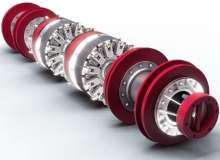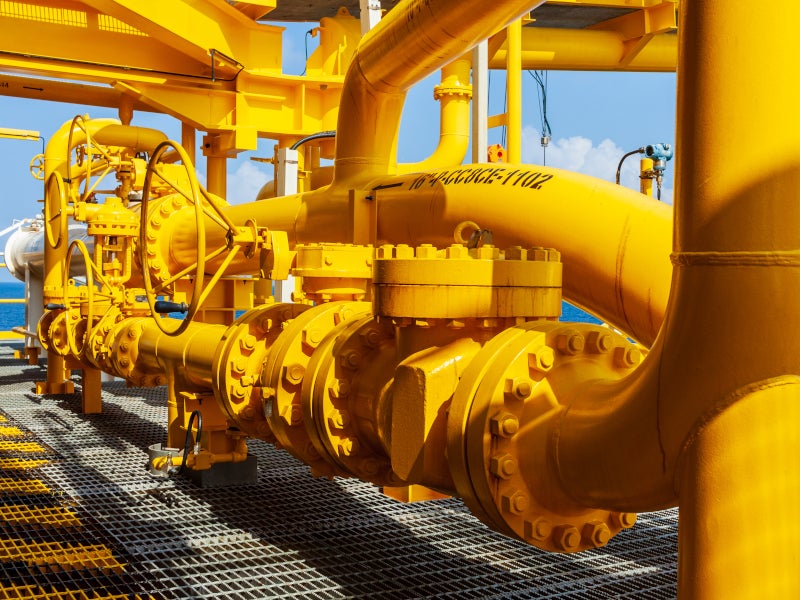
Traditional methods for unblocking subsea pipelines have recently started to make way for more advanced methods, with the main driving forces being cost and safety. According to Scottish industry leader Paradigm Flow Solutions, subsea pipeline blockages cost operators tens of millions of dollars every year, by using expensive conventional methods such as subsea interventions by ROVs or saturation divers, who physically work on a piece of pipeline at the ocean bottom.
Traditional methods for unblocking subsea pipelines
– Pigging
Pigs – tools sent into a pipeline for a specific purpose and propelled by the pressure inside that pipeline – are used not only to clean and / or unblock pipelines, but also to measure things like pipe thickness and corrosion along the pipeline. They usually do not interrupt production, though some product can be lost when the pig is extracted.
There are a variety of different pigs, including customised pigs for keeping pipeline flow steady. These incorporate a brush scraper design, which removes blockages from the pipe’s walls, while a highly viscous pickup gel collects and transports loose debris to the surface station.
De-scaling pigs, meanwhile, are designed to remove hard deposits, such as calcium carbonate, from the pipe wall.
Pigs do have their limitations, however. If the blockage is too thick, for example, a pig can become trapped in the pipeline, causing major disruptions.
See Also:
– Hot Tapping
Industry specialists Tube Tech International, for example, highlighted a case study of a subsea pipeline in the North Sea which had become blocked with wax – as well as a stuck pig.
How well do you really know your competitors?
Access the most comprehensive Company Profiles on the market, powered by GlobalData. Save hours of research. Gain competitive edge.

Thank you!
Your download email will arrive shortly
Not ready to buy yet? Download a free sample
We are confident about the unique quality of our Company Profiles. However, we want you to make the most beneficial decision for your business, so we offer a free sample that you can download by submitting the below form
By GlobalDataA company spokesperson explained that there were several challenges to be overcome, including the fact that half of the pipeline was on land while the other half was on the ocean floor, the volume of wax on either side of the stuck pig could not be accurately determined and a 12-knot rip tide meant divers could not be deployed.
Tube Tech overcame these problems by ‘hot tapping’ (connecting to an existing pipeline without interrupting pipeline flow) into a pressurised system using just two access points and removing the pig via a bespoke drilling method – a world first for this type of operation – with the entire operation taking just one week, including cleaning the remainder of the line to production standard using a variety of cleaning heads to suit heavy scale and other fouling characteristics.
Mike Watson, Tube Tech technical director, claimed this was one of the biggest challenges the company had ever faced: "The client’s only alternative was the use of ships shuttling back and forwards or laying a new pipeline.
"Substantial six-figure sums where being lost every day while the subsea pipeline was out of action. Being able to respond so quickly and with the appropriate pipeline cleaning techniques meant we were able to solve what appeared to be an impossible challenge."
– ROVs and saturation divers
Smart pigging solutions are fast removing the need for divers and ROVs to physically inspect the pipeline, by providing the ability to track and locate pigs at a specific location in a pipeline. Using divers and ROVs are extremely costly exercises, while the use of divers has the added dangers of human error and possible underwater accidents causing injury or death.
With the ability to monitor processes from topside, the number of divers and ROVs undertaking pipeline inspections and / or repairs will continue to dwindle in the future.
Looking to the future
SmartPlug and STOPPLE Train Isolation
TDW Offshore Services delivers safe integrity solutions for subsea pipeline work, including a major focus on developing new innovations to deal with challenging pipeline blockages.
The company’s SmartPlug isolation plug modules can be used in conjunction with its remotely-operated SmartTrack tracking and pressure-monitoring system, providing further assurance that pressure remains properly isolated while work on the pipeline is being conducted, for example the removal of an object or blockage, or replacement of a faulty shutdown valve (SDV).
"By using this method, the operator would not only create a safe working environment for the valve replacement operation, its in situ gas inventory would be maintained at working pressure," said Mike Benjamin, VP of offshore pipeline solutions at TDW.
Steve Appleton, the company’s regional GM for the Gulf Coast and Caribbean, highlighted an operation to replace a SDV in the Gulf of Mexico, stating: "The SmartPlug modules performed impeccably…(achieving) a safe, uncompromising isolation that allowed for the replacement of the SDV in a timely manner."
Appleton added that this was achieved without venting the line or flaring product is significant. Benjamin noted that this "would disrupt flow and cause downtime on neighbouring developments."
TDW’s patented STOPPLE Train plugging system, meanwhile, links two plugging heads into a ‘train’, providing the added insurance of a double block at each isolation point during hot tapping procedures, without the need to install more than one hot tap. The company delivered the first ever subsea STOPPLE Train Isolation in November last year, 2011, in the Gulf of Mexico.
Calvin Schmidt, TDW senior sales representative, explained: "The STOPPLE Train system was ideal because the line in question was a non-piggable sales gas line… It was very important not to flood the line. The dual seals of each STOPPLE Train plugging system ensured the line was isolated and would not flood."
Introduced in 2008, the system has been expanded to include a wider range of plugging head sizes, in response to requests from pipeline operators, while to date more than 80 piping and pipeline isolation projects have been performed using the system.
Pipe-Pulse resonates through subsea industry
One of the more recent advances in technology for unblocking subsea pipelines was launched in mid-2011 at the Offshore Technology Conference in Houston, Texas. The patented technology from Paradigm Flow Solutions could lead to a ‘paradigm shift’ in the way companies deal with blocked subsea pipelines.
Paradigm, a subsidiary of Dutch-based Paradigm Group, is in the process of developing a range of technologies for detecting, remediating and preventing subsea and topside blockages.
Rob Bain, Paradigm managing director, explained that one of the company’s offerings, Pipe-Pulse, will soon change the face of subsea operations: "Subsea blockages and restrictions have been a challenging industry problem for many years. Pipe-Pulse effectively revolutionises the treatment of subsea blockages, taking the treatment to the topside for the first time."
Paradigm’s Pipe-Pulse technology removes the need for traditional physical interventions, such as divers or ROVs. By connecting to either the pig launcher or umbilical termination unit, the Pipe-Pulse system offers a remote method that doesn’t require physical intrusion into the pipeline, instead delivering pressure pulses high in energy and volume into the pipeline or subsea umbilical.
Operated by expert engineers, pulses are transmitted at the speed of sound to a subsea pipeline blockage, at a range of up to 30 miles, completely removing stubborn blockages in just a few days. This is achieved by sending high frequency, low amplitude pressure pulses into the flowline. The length and pressure of a pulse is controlled using a complex series of control valves within the Pipe-Pulse unit and determined by highly specific proprietary algorithms, before the unit creates and injects the correct pulse into the pipeline.
Pipe-Pulse has other applications as well. Paradigm claims the system can accurately detect blockages and leaks in subsea infrastructure, negating the need for the expensive deployment of ROVs to pinpoint the location of the blockage. But even if it were to be solely used for unblocking purposes, the positives are clear.
Highly successful tests included the clearing of a Shell UK multiphase flowline that had been blocked with sand and wax for 11 years, securing Paradigm a $250,000 contract with a super-major to unblock one of their North Sea pipelines. "It is fantastic that we are able to launch it to market with a contract for the North Sea already secured," Bain enthused. "Given the cost implications of the alternative methods, Pipe-Pulse provides an appealing, fast-acting, cost-effective solution."
Pipe-Pulse quickly made a name for itself in the North Sea, boosting production by more than 3,000 barrels of oil a day by clearing pipes that had been blocked for a decade. "The operator had tried various other conventional methods to tackle the issue, but due to the remote location of the blockages from the host platform, access to the pipelines and the subsea infrastructure proved very difficult," Bain explained. "Using Pipe-Pulse, our engineers unblocked flowlines and a subsea wax inhibitor chemical umbilical in less than a week."



